Online Coverage
YOURSTORY.COM
On the handloom trail: how entrepreneur Seema Agarwal travels on work and for pleasure to enhance her business and enrich her life
Seema Agarwal, Co-founder of Artisan Saga, talks about the beauty of handlooms, why they are the real deal, and lets us take a peek into her life as a traveller and an interior landscaper
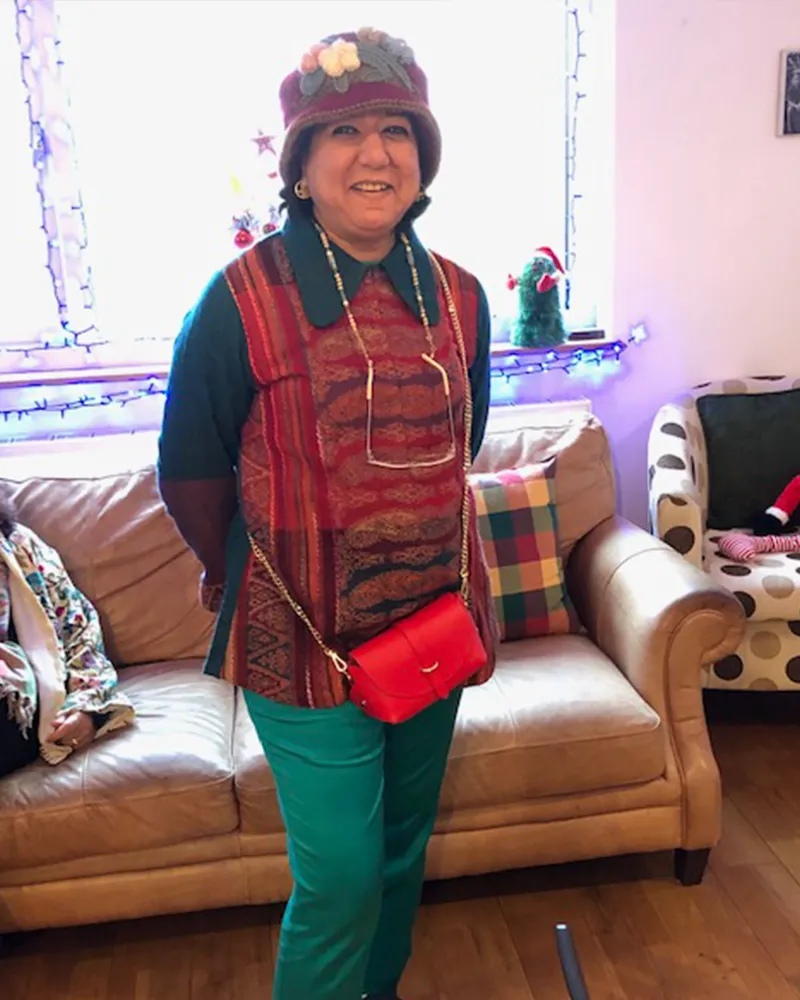
For the love of handlooms
Seema believes in entrepreneurship with a difference. She has travelled across the country with her Co-founder and husband Kaushik, trying to source the purest fabrics.
“We are trying to revive traditional designs, purely handwoven and in pure fabrics,” she says.
“We travel to remote areas of the country and source our sarees directly from the weaver. We do not offer any power-loom sarees or any mixed fabrics to our customers. Our silks and cottons are absolutely pure.”
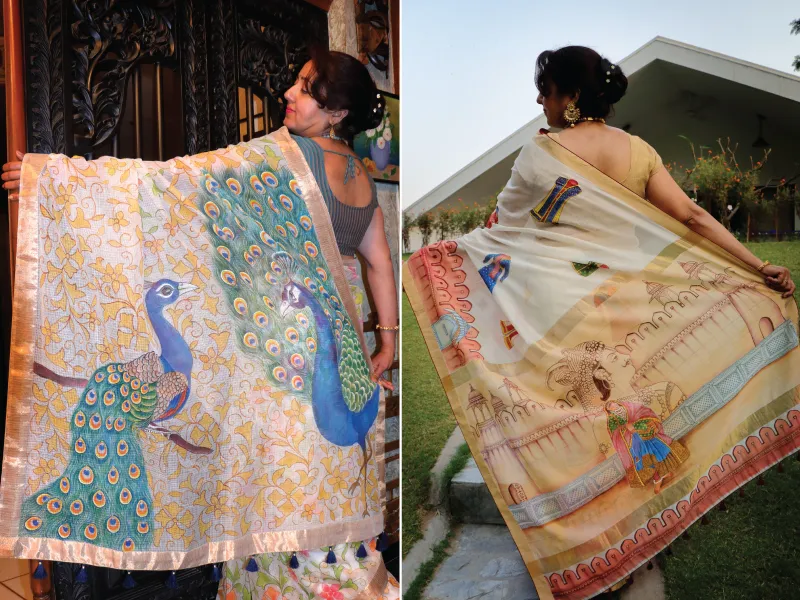
As a passionate advocate of handlooms, Seema explains why it is important to preserve our weaves.
"Handlooms are our heritage,” she says. “It is important to preserve them. There are just so many different weaves and such complex techniques that go into handlooms that it really is a marvel! Handcrafted fabrics have so much more character; they have their own identity.”
When she began her road journey with Kaushik in search of handlooms, she did not start off with the intention of being partial to the fabrics, but after seeing what goes into making handloom textiles, she has become a complete loyalist.
“When you wear a handloom, it is like the difference between owing a painting or a print. Once you have experienced it, you only want what is authentic.”
Bitten by the travel bug

When Seema is not travelling on work, she likes to set off on vacations with her family. “I love going to the mountains, wildlife sanctuaries, and culturally rich cities. Travelling is wonderfully relaxing. It recharges me and gives me a different perspective of life."
"I always come back more positive and energised as I learn about different people, their stories, and their experiences.”

"Srinagar holds top spot among her favourite places. “I have been going there often since my childhood and I have a lot of memories and friends there,” she says. “Also, a houseboat stay in Srinagar is such a unique experience. I also love Puducherry and Jaipur.”
As for international travel, their trips to the Lake District in North West England and San Francisco in the US have been very special.
One of the memories of her travels that she can never forget was when she was travelling to Simla by train and was caught in a snow blizzard at Dhanaulti. “I had to take a bus from Kalka and that year, Simla experienced one of the worst snowfalls in 20 years,” she recalls. “All the routes were blocked and there was no transportation available. Many people died and I could have been one of them but I managed to reach my family in those impossible circumstances. I can only say that it was due to my courage, endurance, and determination that I reached them.”
The world of art and design

Seema also enjoys decorating spaces, which she does now and then. “I’ve studied and practised designing earlier, which is why it’s still very close to my heart,” she says. “The most important element while designing a space is to be true to yourself. As a designer I like to understand the needs of my client and translate their desires in the most aesthetic and practical manner possible.”
Another favourite hobby is painting. “During my school and college days I used to paint and sketch a lot but I did not pursue it,” she says.
“I love art and my house is full of it, from all our travels. As a child, my family used to go to Udaipur often and I was always fascinated with the miniature art there. That was why I wanted this art to be incorporated into my sarees. Today, despite the fact that there are many hand-painted sarees in the country, ours is a class apart. They are done by miniature artists and very intricately done.”
Entrepreneurship is not easy
“Entrepreneurship can be far more demanding and taxing on your time but at the end of the day you are your own master,” says Seema, as she speaks about her love for entrepreneurship. “I often work till late hours in the night. It’s pretty stressful sometimes, but worth it.”
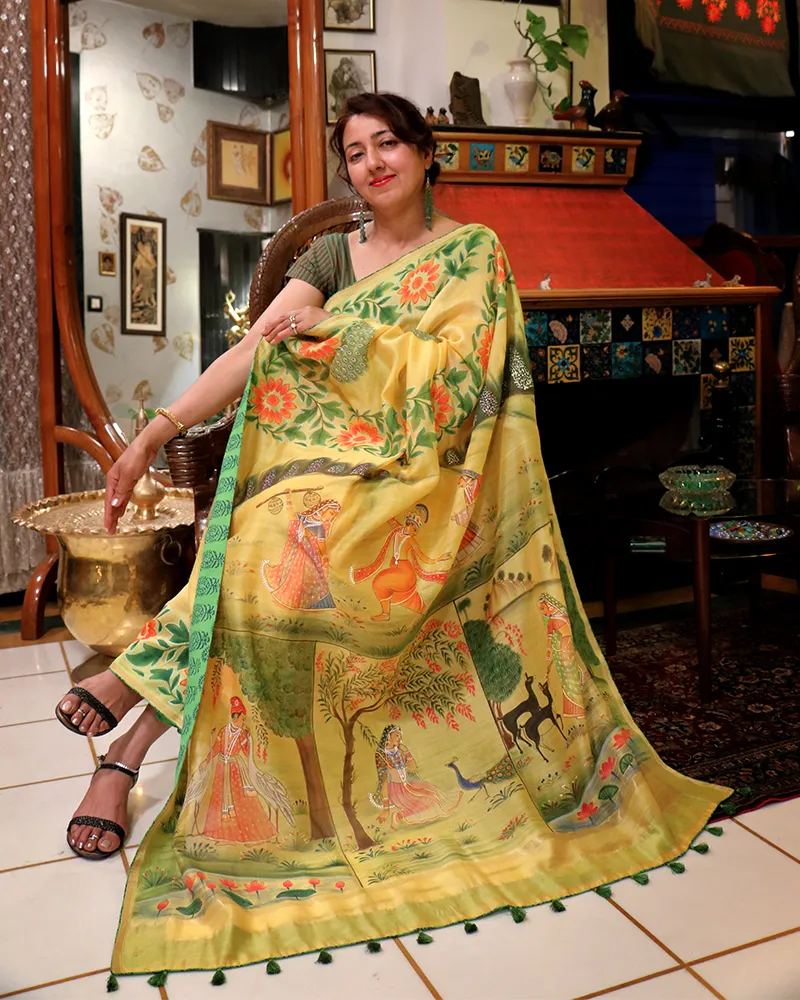
Seema says their business of curation of handlooms is fairly recent. As for their USP, Seema says the real secret to their exclusivity lies in the fact that no two sarees in their repertoire are the same.
“We neither buy in bulk nor do we source from only one weaver. We visit many weavers and handpick our sarees and fabrics from many different ones to curate something unique. Of course, it takes so much more effort from our side but we enjoy travelling and we also love interacting with local weavers and their families, visiting their homes, and eating the local food.”
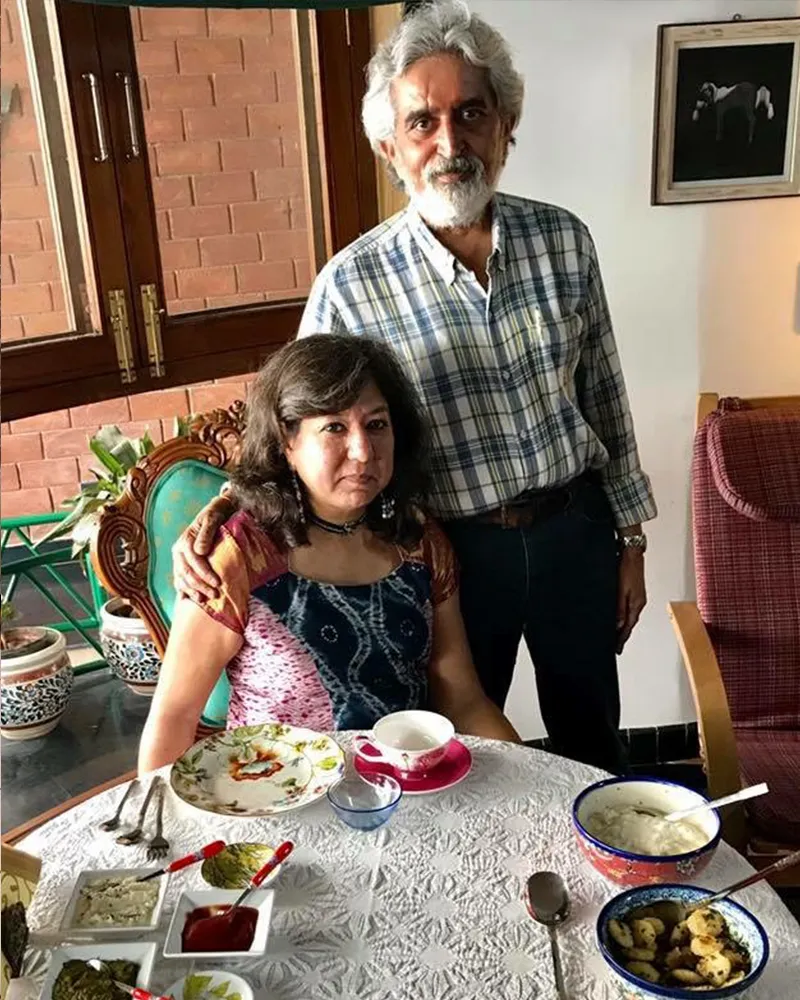
Today Artisan Saga is a collaborative partner with online portals like Parisera and Avishya, besides their website. They also take part in reputed exhibitions like the ones held by Craft Council, Dastkar, and Pause for a Cause, to name a few. “Most of our clients are handloom lovers and admirer of authentic, traditional unique sarees from all over India.”
Her advice to budding entrepreneurs is to believe in the power of focus.
“Make decisions by focusing on your goals and never lose sight of them. Learn to trust people and yet be wise. And it’s important to remember that it’s always good team work that produces good results. Always, think for a moment and take a step back before taking any decision.”
And in the future…
“We want our brand to be known for its genuine and authentic handlooms. We also want to move towards designing more sarees and curating less,” she says.
As for following her passion for travel, the couple is planning a trip to South India soon and, one day, a trip to Poland, too.
FIBRE2FASHION.COM

Artisan Saga, founded by Kaushik Rajani and Seema Agrawal, is an online store for artisanal handlooms and handcrafted art. The brand handpicks the best from the finest hand and curates classic and traditional handloom sarees in pure fabric reflecting the diverse Indian weaves and styles. Fibre2Fashion spoke to co-founder Seema Agrawal to understand the company's journey and the ebbs and flows of the Indian handloom niche.
Fibre2fashion : How and when did you start Artisan Saga? Why did you want to work with handlooms?
Seema Agrawal:
There was a wedding to attend in Mumbai in January 2016. The love for travel and Indian textile made us want to take up the road journey to Mumbai and we planned our route such that we pass through villages of Rajasthan, Gujarat, Maharashtra and Madhya Pradesh. That was the beginning of our sourcing through interaction with locals. After coming back with our car fully loaded, we did our first exhibition in Akshaya Pratishthan and started our Facebook page, followed soon by launching our own website. And the journey continued from there. There has been no looking back since then. Today we are collaborative partners with online portals like Parisera and Avishya. Kamla, a shop run by the Delhi Craft Council, also stores our sarees, besides some other leading hotels, which we cannot name. We continue to participate in reputed exhibitions with the Craft Council, Dastkar and Pause for a Cause.
Fibre2fashion : How many weavers do you work with? Do you work with artisans directly?
Seema Agrawal:
We do work with weavers directly. Our weavers come from villages in Benaras, Paithani in Maharashtra, Patola in Gujarat and Maheshwar in Madhya Pradesh. We work with 12-15 master craftsmen. The master craftsman is the head weaver who organises the work, coordinates the process and has many weavers working under him. It is a team work. There is the skilled technician who draws, the weaver who weaves, and so many other tasks that are performed by different people.
Fibre2fashion : What is the percentage of women workers in the Indian arts and crafts community?
Seema Agrawal:
It is fifty-fifty, as the whole family is involved in weaving.
Fibre2fashion : Which rare traditional weaves of India are you working to preserve? Can you brief us about some lesser known handloom forms?
Seema Agrawal:
Kadhwa weave and tanchoi jamawars from Benaras; paithanis with traditional borders in Lehar; asawali pallavs; brocade borders like muniya; lotus, parrot peacock cotton paithanis were something unknown that we discovered during our first travel in 2016. We spotted these with one weaver who had only two pieces. We immediately grabbed these and introduced them in Delhi through our exhibitions. No one had heard of these then, but these charmed everyone. So we encouraged our weaver to weave more such items and promised them regular orders. They were not willing at first because cotton is tougher to weave in as the yarn keeps breaking and it takes longer to weave. But as we started placing regular orders, they evinced interest. Now we see other weavers opting for cotton paithani as well and vendors sourcing these. But we do feel we had a hand in making people notice this.
Fibre2fashion : How do artisans and weavers benefit from working with Artisan Saga?
Seema Agrawal:
They get regular work from us. It keeps their home economics in place. They feel encouraged to expand their work. One of our weavers has now added a special loom to weave cotton for us. Their children who were not interested to join family tradition of weaving are now very much involved with other aspects of weaving, contributing to grow and reach out, and eager to connect with us through Internet.
Fibre2fashion : Which are the most widely sold handlooms at Artisan Saga?
Seema Agrawal:
Paithanis and single ikat Rajkot patolas are the most sold.
Fibre2fashion : Tell us about the training process that the local weavers and artisans have to undergo to meet the demand of your customers.
Seema Agrawal:
It is family tradition; the skills are passed on from one generation to the other. Nobody attends a formal training school. They start learning from early years as the whole family is involved in the weaving process, taking turns to weave.
Fibre2fashion : What new can be expected, be in terms of treatment, colours, design or finishing?
Seema Agrawal:
We are trying to revive old traditional designs in ikats and are working to bring saree designs on dupattas.
Fibre2fashion : Is the competition in your line of business getting fiercer? How do you cope with that?
Seema Agrawal:
Competition is healthy if taken in the right spirit and it makes you grow and turn better. But we believe in being different and so our competitors cannot match us.
Fibre2fashion : Please tell us in detail about your latest collection.
Seema Agrawal:
During my school and college days, I used to paint and sketch a lot, but I did not pursue it. I love art work and my house is full of it. In my childhood, I used to go to Udaipur often and I was always fascinated with their miniature art, the intricate painstaking skill. So I wanted that to be incorporated in sarees. Last year we launched the first series of The Inner Connect, a collection of hand-woven and hand-painted sarees by a miniature painting artist. You will find many hand painted sarees but ours are a class apart. They are done by a miniature artist, so you can see the influence. They are quite intricately done. Moreover, I have also brought in a deeper aspect to these expressions as they are thematic, based on a higher aspiration. Some even have quotes from Indian literature scripted on them in consonant with the theme of the topic expressed.
Fibre2fashion : What is the perception of young India towards handloom?
Seema Agrawal:
Indian youth is still not too aware of the difference between handloom and powerloom. Although there is a movement where sarees are being promoted (through various saree groups online) and saree draping workshops are being held. We see many young girls buying sarees now and wearing them in different styles. But while purchasing, they cannot tell the difference. They tend to get drawn towards cheaper priced textile. Thankfully, awareness towards handloom is increasing due to promotions by us and many others on Instagram and Facebook, exhibitions like Dastkar, Crafts Council of Delhi and saree groups like Six Yards x 365 Days where only handloom wearing, handloom weavers are promoted.
Fibre2fashion : What needs to be done to keep Indian handlooms more relevant?
Seema Agrawal:
First, to make the items cost effective, the yarn must be made easily available and less expensive. The goods and services tax on the handloom must be removed. More exhibitions should be encouraged and promotions done through special schemes and facilities. The weaving villages must be made easily accessible and their living conditions improved, basic infrastructure and cleanliness should be provided. In schools and colleges, visits to such villages may be organised and workshops arranged to make the youth aware.
Fibre2fashion : What are the challenges that this niche faces?
Seema Agrawal:
The challenges are to convince the customer to differentiate between handloom and powerloom and to timely source the required number of handloom sarees.
Fibre2fashion : What kinds of disruptions does this niche need?
Seema Agrawal:
Workshops, write-ups, exhibitions for more awareness and government schemes to generate funds are needed.
Fibre2fashion : How supportive are government initiatives and schemes towards the Indian handloom community?
Seema Agrawal:
Handloom weavers tell us they hardly benefit. This is an unorganised sector of private individuals carrying on the trade and we do our best to support them. (HO)
YOURSTORY.COM
‘My love for the textile inspires me’ – Saree curator and co-founder of Artisan Saga on the beauty of handlooms
Seema Agrawal, co-founder and Design Head of Artisan Saga speaks about handlooms, Paithani sarees, weavers and her love for indigenous textiles
If the kaleidoscopic colours of the Paithani sarees are not fascinating enough, then the hand-woven beauty of the weaves makes it the queen of heirlooms. Paithani sarees, named after the Paithan town in Aurangabad district in Maharashtra, are characterised by unique borders and a pallu that is heavy with design and large motifs.
Artisan Saga, a Gurugram- based design house that presented their latest collection at Mithila in Bengaluru brought classic Paithani sarees to the city besides a range of other handlooms. The founders of Artisan Saga, Seema Agrawal and Kaushik Rajani also showcased a collection of miniature art-inspired hand-painted sarees with influences from Pichwai Art.
YS Weekender caught up Seema Agrawal, co-founder and Design Head of Artisan Saga to speak about why it is important to discover the beauty of handlooms in our country.
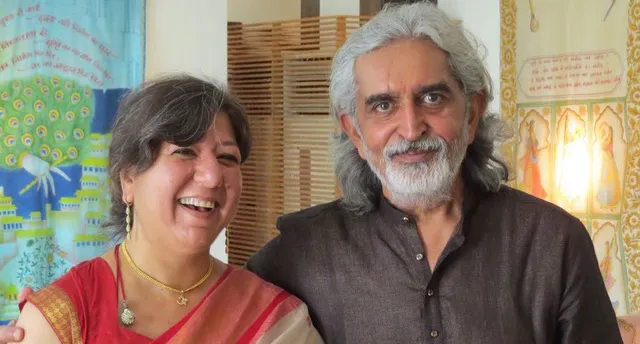
Seema Agrawal and Kaushik Rajani
“My association with handlooms began with a road trip,” says Seema. “We went on a tour by road through MP, Gujarat, Maharashtra and Rajasthan and visited all the small towns and villages on the way. We took a whole month to meet various artisans and weavers. It was a fascinating trip.”
When Seema and Kaushik returned from their journey, they decided to enter the arena of handloom sarees. Today, Artisan Saga is an online haven for lovers of art and beauty, where form, colour and texture of beautiful weaves are brought to life by creative craftsmen. They handpick the best designed sarees and curate a variety of handloom sarees.
“Our interactive communication with the local craftsman helps us to understand in depth, the effort behind his or her creation,” explains Seema.
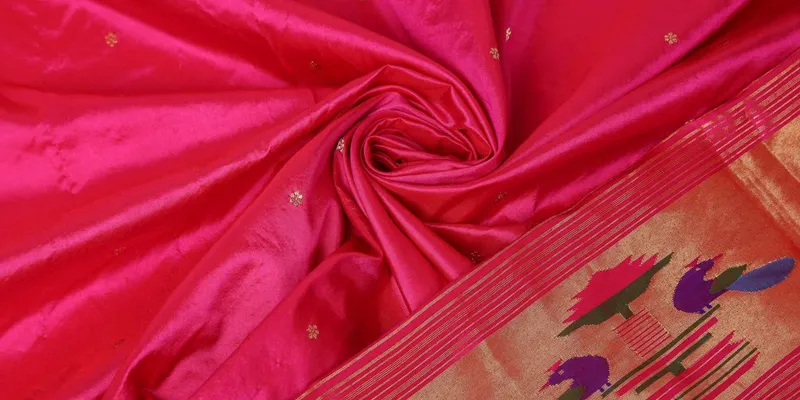
Paithani sarees showcase the skill of the weavers
“Many weavers struggle to make their ends meet and fight for survival. In fact, the whole family of the weaver gets engaged in the weaving of a handloom saree, taking turns to weave so as to increase their output and earn more money.”
According to Seema, most weavers have their own creative inputs to offer in the making of hand-woven sarees, a skill that is usually inherited from their forefathers. Their collaborative efforts are now providing them the means to sustain handloom weaving and encourage the younger generation to not only adopt the family skill, but to take it forward by developing complex designs with the use of computers.
So when you drape a handwoven saree, remember, it is not just six yards of fabric that you drape, but you embody somebody’s thought process, somebody’s creative skill, and you also help a weaver’s family to survive and a tradition to live on.
“When I watched the weavers at work during our travels I was so proud to be a part of the country,” she says. “There is such marvellous craftsmanship involved. The weavers respect their work and are passionate about it. Even the way they handle their sarees is so reverent – it is like unfolding a work of art. It feels like there is a soul in the saree and it can be felt.”
Seema is an alumnus of the Inchbald School of Design, London and she handles the choice of design and the creative work while Kaushik handles the business aspect of the enterprise.
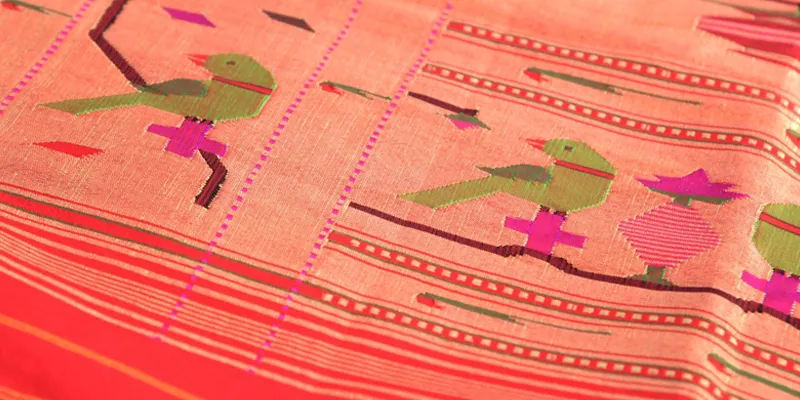
A lot of patience, talent and teamwork goes into each handloom saree
“I feel that the handlooms of India are so beautiful that more people should be aware of all that is available in our country. There should be trips organised to show people the weaving process and what goes into it. People will begin to appreciate the amount of patience, talent and teamwork that goes into each handloom saree,” she adds.
She also has some tips to offer to women while buying a handloom saree. “If you are short or curvier, then it is best to stay away from sarees with big borders. Go for the narrow ones. Those who are tall and slim should opt for sarees with bigger motifs. Your blouse should be stitched with elbow-length sleeves because the whole border of these sarees falls onto the elbow."
She believes that the beauty of an Indian garment lies in the fact is that it suits all women without exception whereas western garments suit only a few women perfectly.
Today, a number of young people are also taking interest in sarees due to the various movements on social media where girls tells their friends the stories behind their sarees. Seema believes this is a great way to popularise Indian garments.
With Artisan Saga, she hopes to take the beauty of handlooms to more and more people. “It is the love for the art and the love for the textile that inspires me,” she says.

